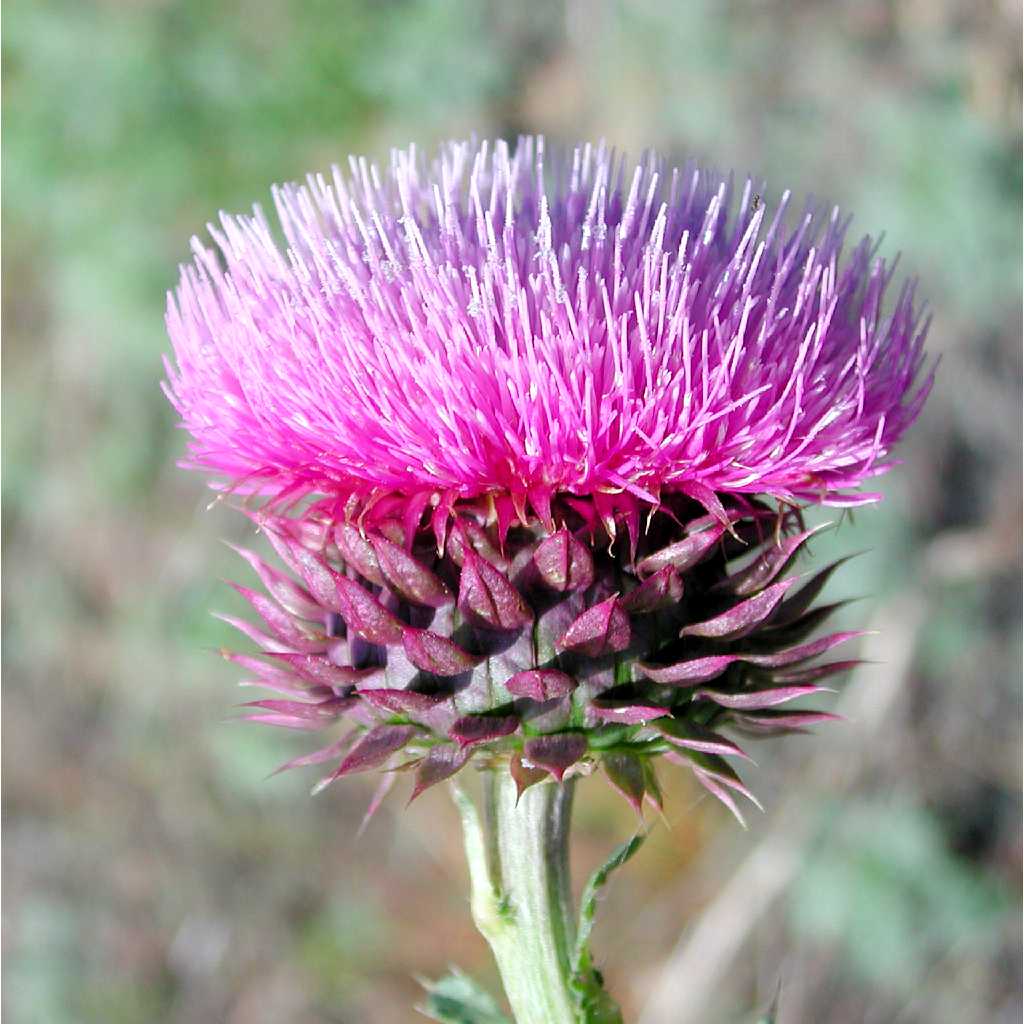Carduus
|
Family: Asteraceae |
Annuals or biennials [perennials], 30-200(-400) cm. spiny, ± tomentose, sometimes glabrate. Stems erect, simple to much branched, (spiny-winged) . Leaves basal and cauline; petiolate or sessile; blade margins spiny dentate, often 1-2-pinnately lobed, faces glabrous or hairy, eglandular. Heads discoid, borne singly or 2-20 in dense clusters or corymbiform arrays. ( Peduncles naked or leafy-bracteate, spiny-winged or not winged.) Involucres cylindric to spheric. Phyllaries many in 7-10+ series, linear to broadly ovate, bases appressed, margins entire, apices ascending to spreading or reflexed, acute, spine-tipped. Receptacles flat, epaleate, bearing setiform scales ('flattened bristles'). Florets several-many; corollas white to pink or purple, ± bilateral, tubes long, slender, throats short, campanulate, abruptly expanded from tubes, lobes linear; anther bases sharply short-tailed, apical appendages oblong; style branches: fused portions with slightly, minutely puberulent, swollen basal nodes, distally papillate or glabrous, distinct portions very short. Cypselae ovoid, slightly compressed, faces smooth. glabrous, attachment scars slightly lateral; pappi persistent or falling in rings. of many minutely barbed, basally connate bristles or setiform, minutely barbed scales ('minutely flattened bristles'). x = 8, 9, 10, 11, 13. Much like Cirsium, differing chiefly in its pappus of merely capillary, not at all plumose bristles; stem commonly spiny-winged; achenes quadrangular or somewhat flattened, with 5-10 or more nerves, or nerveless. 100, Old World. Gleason, Henry A. & Cronquist, Arthur J. 1991. Manual of vascular plants of northeastern United States and adjacent Canada. lxxv + 910 pp. ©The New York Botanical Garden. All rights reserved. Used by permission. |

